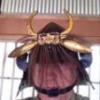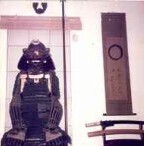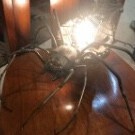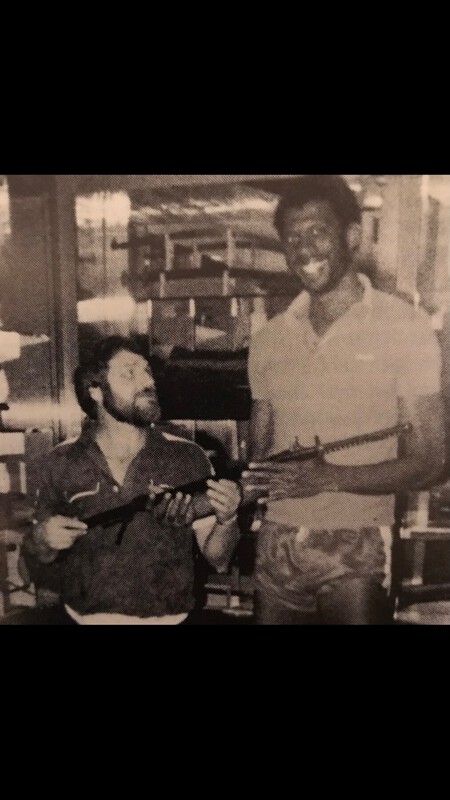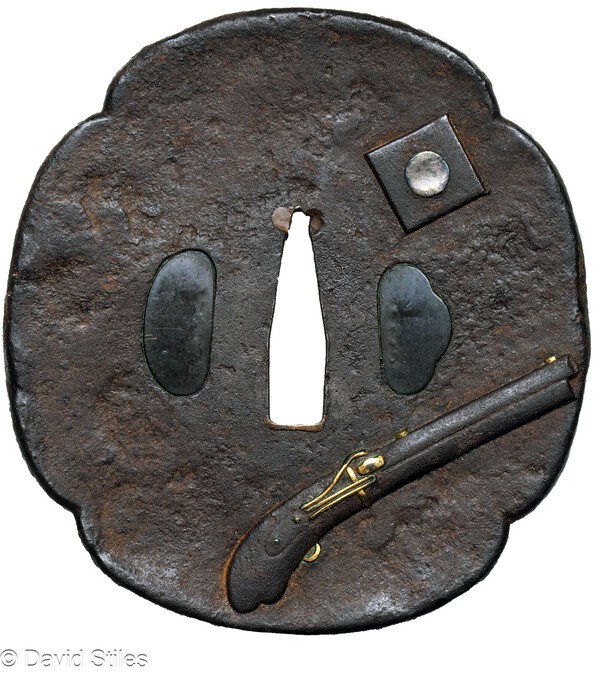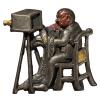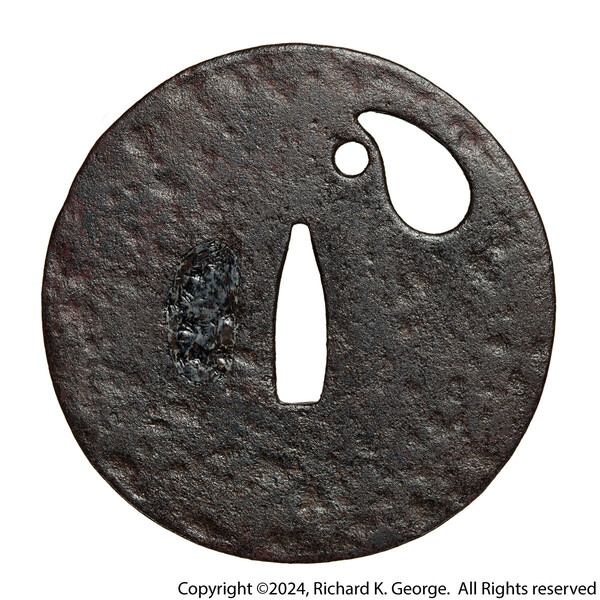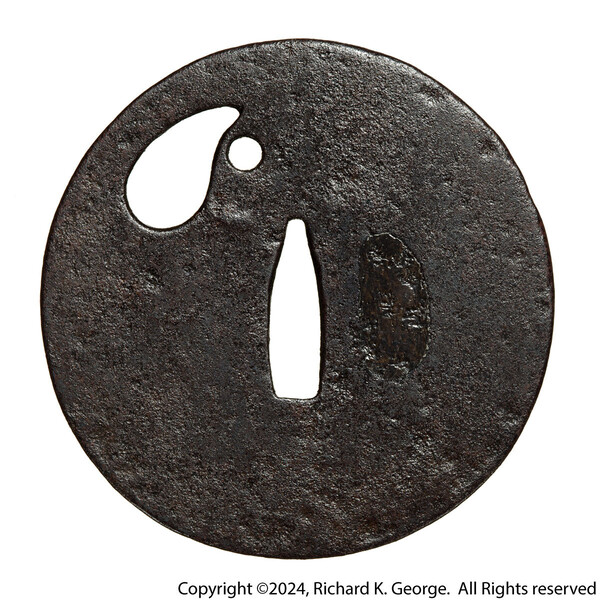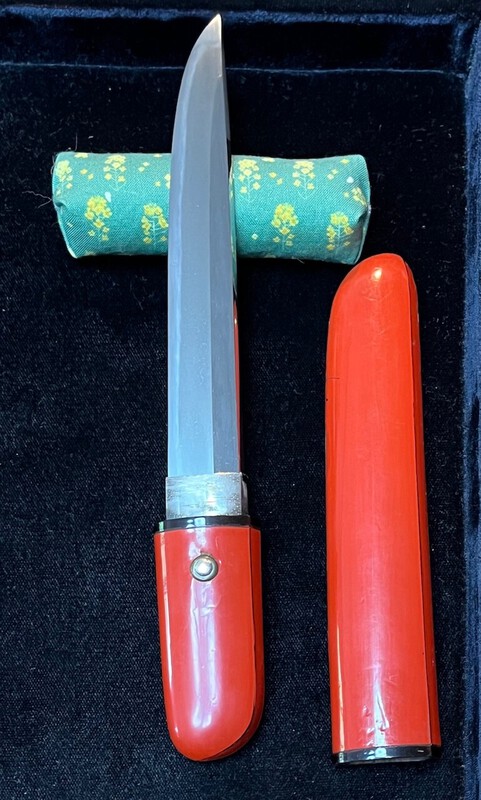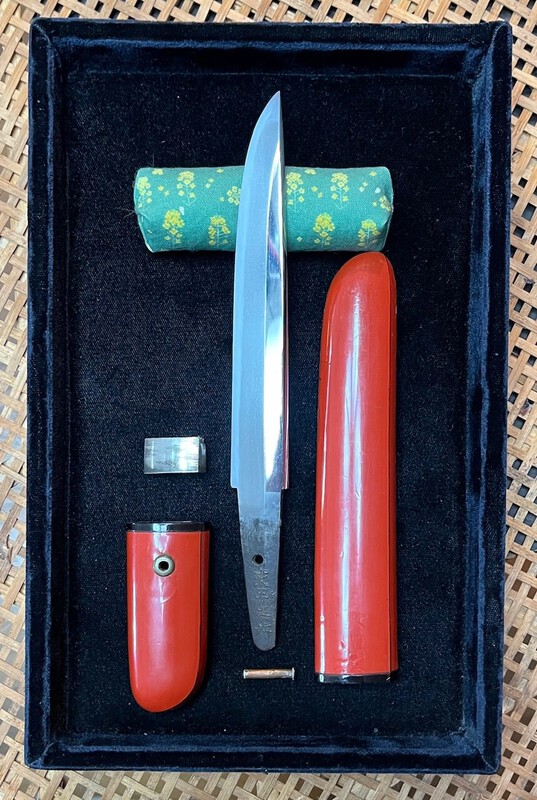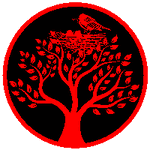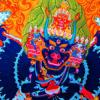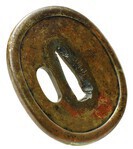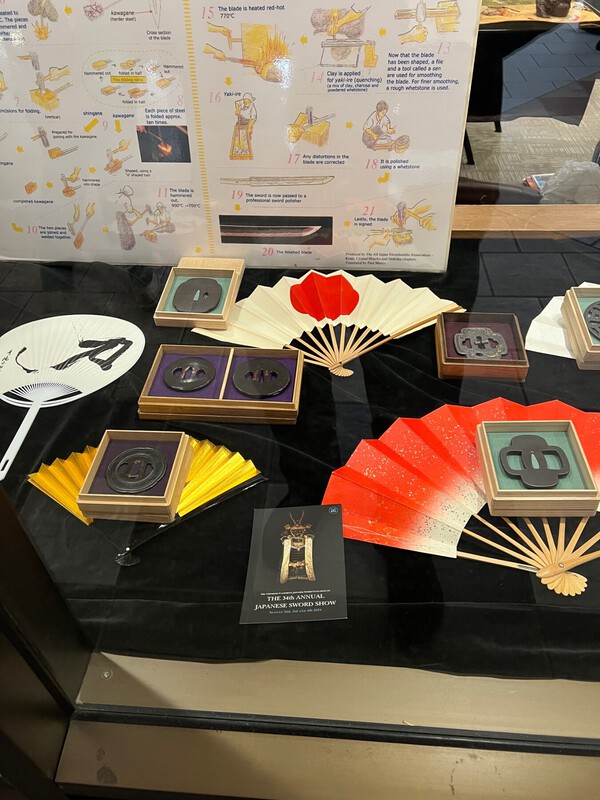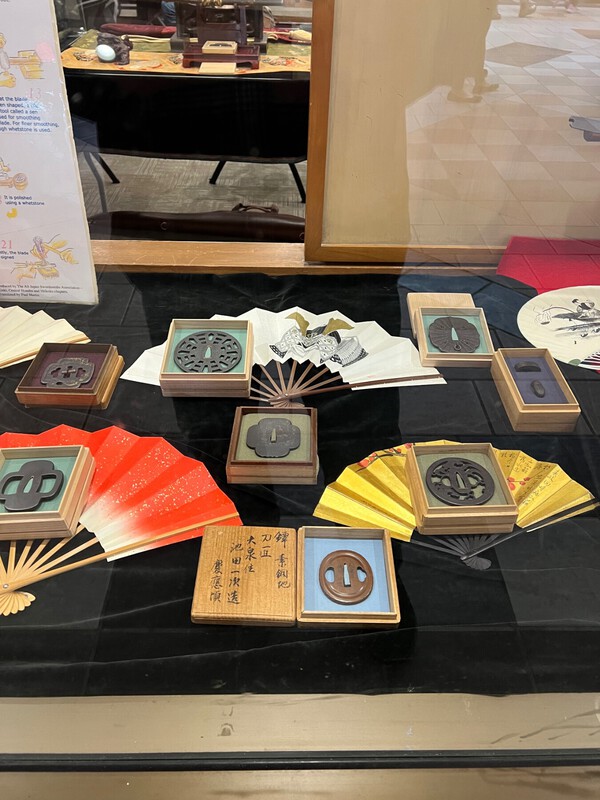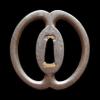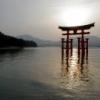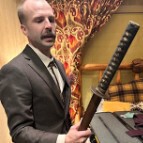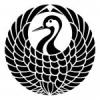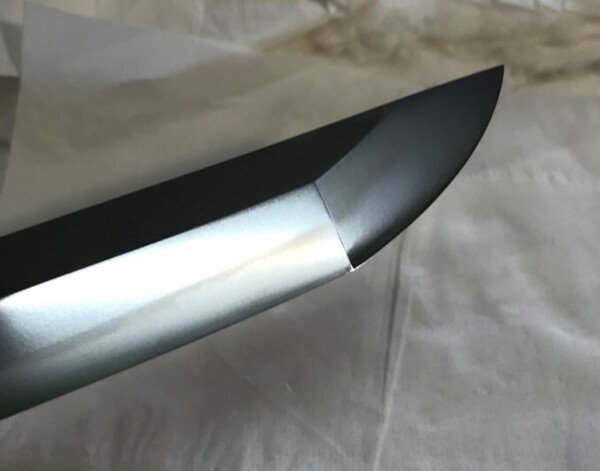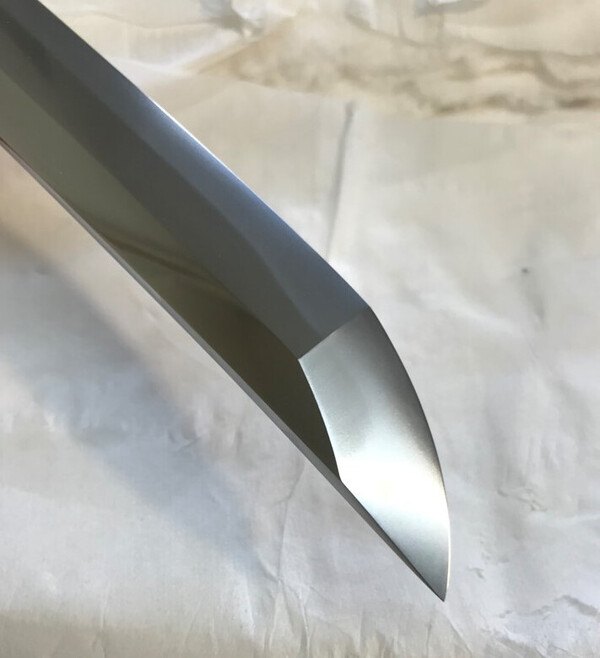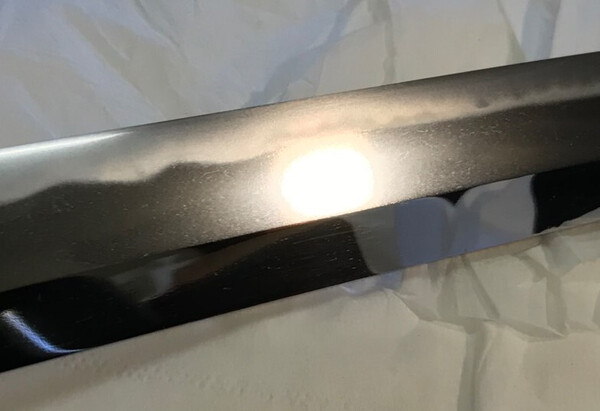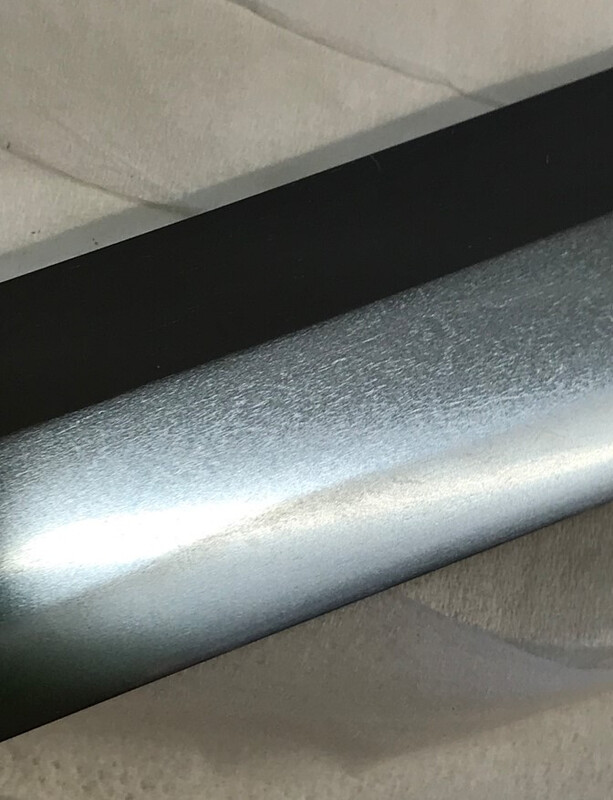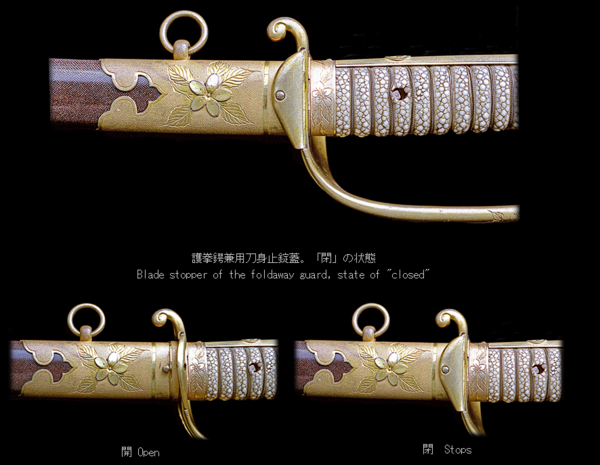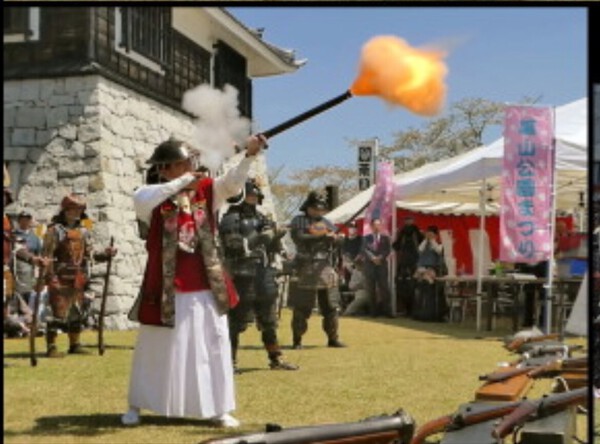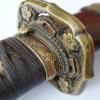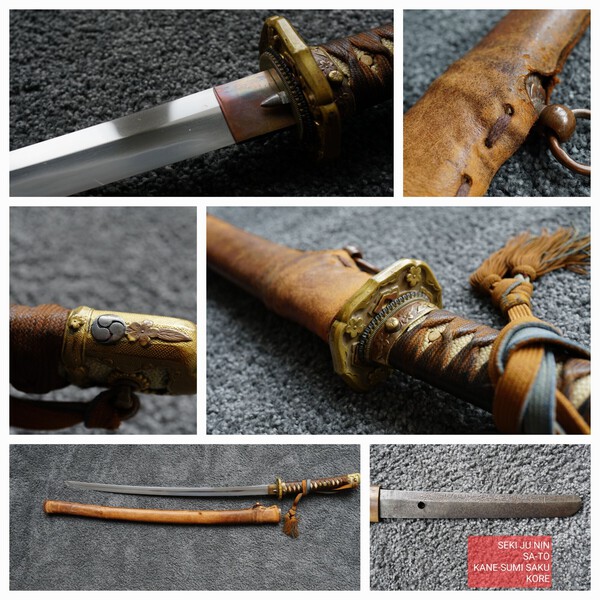Leaderboard
Popular Content
Showing content with the highest reputation on 04/22/2024 in all areas
-
6 points
-
One good thing about Japan is you can fly over, wander around and step back into this kind of atmosphere, forgetting all about the troubles in other parts of the globe. Last weekend was another busy one, with a sword display up in the grounds of Achi Jinja on Tsurugatayama in Kurashiki. Always a pleasure to go back there as I once lived at the foot of that hill. The Jinja and surrounding walks are lovely at any time of year. During the day on Saturday the polisher handed me back the little Nami-no-Hira tanto. One or two spots of rust were deeper than he had thought so he had been forced to use a coarser level of stone, he said. That evening I had a message to say that the Satsuma long gun had been repaired, so sneaking out of the house I did a two-hour round trip to pick it up. The snapping lock now works again, at last, and he had managed to extract the stuck Bisen breech screw. The folding trigger turns out to be a strange affair that somehow disengages from the serpentine lock when in the folded position. I wonder if there was a further external soft cover that held it folded, protecting the exposed trigger for travelling? Now I must create a karuka ramrod for it. Luckily someone gave me a length of red oak, (the proper stuff) which I may attempt to whittle down into a suitable shape.6 points
-
Some exceptional cloisonne and Meiji metalwork in this upcoming sale…… https://www.bonhams....eased-estate/?page=45 points
-
5 points
-
5 points
-
Noshu ju Kanetoshi -- Murayama Kanetoshi. NTHK 70 pts (from Yoshikawa sensei in 1997 Long Island). Unique hada with a line of elliptical mokume along the hamon line at regular intervals. Probably drilled a few cm in a line into the surface of the steel before it was stretched into a blade. Fittings are good quality, and the knot is a diplomatic knot (gold-plated wire and gilded cloth)5 points
-
I took some better photos of this tsuba over the weekend for update of my website (www.tsubaotaku.com) next month. Here is a low-resolution copy of one of the photos small enough to upload. I came across the previous owners notes about this tsuba. He was thinking it was a work of the Ko-Nara School. The iron bones are nice along the rim on this tsuba making me agree with the Ko-Nara School call but need more information. I have never had any Ko-Nara School tsuba before in my collection and need to read up on them in general. I did come across this webpage with information on Japanese Sword Index: Japanese KO-NARA TSUBA (japaneseswordindex.com)4 points
-
4 points
-
4 points
-
I haven't been able to shoot anything for over a year due to health issues - but I FINALLY got the studio cleared out, the various wind up stands in place, figured out how photoshop photoshop had screwed up my workflow (and workarounds), etc, and... Just for grins, here's a couple of images of a ko-tosho (or at least that is what the NBTHK thought it was, FWIW) I picked up off of yahoo!Japan not too long ago. I am not sure what the theme is, comments about what it might be are appreciated. The little beastie has a black coating - when I get some more time I will have to ascertain if it's black lacquer (I that might be what is going on) or if somebody put black wax or something on it. I need to pull down the microscope and fix that workflow next, thought that might take a while as I have a whole bunch of other fittings to try imaging. The piece measures74.2mm(H) X 73.3mm(W). It measures 2.9mm(max) at the seppa area and tapers to 2.3mm (max) at the mimi. rkg (Richard George)3 points
-
Thank you, Sam. He graduated Annapolis in '65 and served two tours in Vietnam, and retired a Captain. Raised three children, helped many people, and lived to celebrate his 80th with a surprise birthday party. Diagnosed February with stage 4 pancreatic cancer. Still in hospice, but unconscious since last Tuesday.3 points
-
3 points
-
勾玉・曲玉 - magatama, literally curved jewel. Like hōju, magatama has also a religious significance, but it pre-dates (for many centuries) the Buddhist tradition. A magatama is one of the three imperial regalia of Japan (with a mirror and a sword).3 points
-
Rick forgive me I responded quickly because I was busy but without carefully reading your post...my condolences...the blade is definitely the same I hope Mr. Hannick can tell you more about the blade, maybe he also had the possibility of studying it personally. @GeorgeLuucas thank you but credit goes to g Google...I was looking for info on Mitsumoto and... Giordy2 points
-
2 points
-
Authentic first pattern aluminum handle NCO sword with repainted handle and scabbard.2 points
-
Could use closer shots of the stamps and tsuka diamonds, but it looks like legit, with a total repaint. Tassel is either a repro or like Thomas said, from another country. I'd be excited about this one, even with the repaint due to the very early handle design. Note the barrel screw passed through the ito on one side, and the wrap starts against the fuchi on one side and crosses away from it on the other like real ito does. They modified the design a little later. I had one of these a while back, but traded it to Stegel for a kyugunto. I haven't see the fakers use this pattern tsuka.2 points
-
I think a repaint as you suggest. The sword knot could be from some other country? Note the metal rivet on one end. I do not recall the Japanese ones having a rivet.2 points
-
2 points
-
2 points
-
I will strongly recommend going. I went to both 2018 and 2023 events, unfortunately I have to skip this one as I will be in Japan. On both years I enjoyed lectures very much, I think on both years I tried to listen to all of them. They are very nice however they can be quite specific on certain subjects. For me the best part of the events is meeting the people around Europe. It is fun to meet some NMB members, NBTHK-EB members, people that I know from other sword related stuff. Previous years have been excellent on that front, lots of familiar faces. On 2018 event I enjoyed the joint effort of sword clubs/collectors as there was an amazing study section of very high level swords & fittings. Unfortunately that wasn't present in 2023. On both previous events there have been for sale swords and fittings etc. from affordable to very expensive. In general I didn't really see cheap low quality stuff being offered either year. The affordable items were also of quality, so I feel that it would be "safe" to purchase as first time buyer. Of course depending on what you are looking for there can be a variety of offerings. I have not bought anything from the events. The special Friday event might be a new one? I think the show last year was 2 days and 2018 special event was only for exhibitors etc. if I remember correctly. As you are from Germany there will be (most likely) lots of German guys with very high level of knowledge attending, so I hope you will meet some of them and maybe get to discuss some sword stuff.2 points
-
It’s “光重” (Mitsushige + kao), Marius. The kao seems very similar to the 3. Kikuoka generation, late Edo…(picture is a bit blurry, so no warranty in terms of the kao).2 points
-
Recently I have been working with Ted Tenold (Legacy Arts) in offering high quality nihonto prints on canvas. Ted worked closely in partnership with Darcy, and some of the images will be recognizable as swords and fittings that were offered on Yuhindo in the past. Others are a swords that Ted and I worked together on more recently. Please see below for a list of prints that are presently available. The dimensions of these prints vary, and in the coming days I will update the gallery to include dimensions for each. https://swordsofjapa...supplies/art-prints/ Please note that the prices presently shown include US domestic shipping for a fully stretched canvas. I will calculate International shipment on a case-by-case basis, please reach out to me directly with any questions and I would be happy to discuss further. Best regards, Ray1 point
-
1 point
-
1 point
-
@Matsunoki Colin, people tend to shy away from metal, but if you can use tools, as you obviously do, and have the eye, then metal is really no different from wood or bone or any other material.. Yes, there are different techniques to learn, but that is the fun bit! The only time that it scared me was the first time that I worked in gold, that was different ! I was only thinking that it was hundreds of pound worth of material in my hands, and I was scared of damaging it! However, after I convinced myself that it was just another piece of metal, it was a piece of cake. Try working some copper first, and then progress. Metal is fun, and maybe you'll find another outlet for your skills and talents. Maybe I'll try and amass some pictures of crayfish etc, and then have a go during the winter. Unfortunately, my skills are very limited, I can copy many things, but have almost never had an original idea in my life. So show me a picture of something and I'll have a go, but ask me to design something and it is a lost cause!1 point
-
That happened about 12 years ago when a server move corrupted all the kanji. There was no way to get it back. If someone is able to send me the kanji to replace, I'm happy to edit and replace it.1 point
-
Over the last few years prices for the very best Meiji works (and some older art) have skyrocketed driven probably by a realisation of just how unbelievably wonderful they are and how cheap they (still) are compared to many other works of art. It’s like “the penny has finally dropped”…doubly so for the finest metalwork.1 point
-
1 point
-
1 point
-
1 point
-
I have my ticket... I'll take photos if they let me. Thanks!!!! turns out it's only 12 by car, 25-30 by public transport from my hotel. I should get a good 3.5 hours there (this is the only day I'll have free)1 point
-
Thanks Phil, and thanks for the additional photos. The all brown tassel tells us the sword was carried by a Gunzoku, the civilian branch of the Army.1 point
-
More info here: https://www.militaria.co.za/nmb/topic/46756-a-survey-of-markings-on-suya-shoten-swords1 point
-
Hi Jean Thanks for the reply. Name is Lewis. Appreciate the feedback. I will check out the previous reports.1 point
-
HB, please give us your first name plus an initial to address you politely (it is a rule here). We had some reports on former Utrecht events here in the NMB which might help you. In my memory, the lectures and demonstrations (in English) were interesting, depending on where your collecting focus is. The prices were 'normal', I think, for what I was looking at. Buying there is of course a good opportunity and saves you from the hassle of customs and shipping. Can't help you with that special Friday event.1 point
-
Thank you again Mauro. 勾 = be bent, slope, capture So the theme is "sloping jewel" as in akin to https://kansaicultur...-of-Japan-houju.html ??? -----------Glad to know you are back RKG. I didn't know you were ill. As life would have it, I was photographing a Ko-Tosho yesterday. In some light, it is battleship dark grey. In other light, it gets dark as a kamakura sword nakago. Ko-tosho is my call. I haven't bothered with the NBTHK opinion yet.1 point
-
It takes MANY layers of urushi to do a proper job....don't remember how many, but it's a time consuming job that takes years to perfect. Here's some info on the process: https://www.inkedhap...reveals-the-secrets/1 point
-
Techniques can vary but commonly the “shell” is sieved onto damp base colour lacquer. The further coats of base colour are applied over the top. When fully hardened the whole is polished down to a smooth surface until the shell emerges. The “inlaid” shell is also polished in that process but the skill is obviously in not polishing too deeply. The aogai can tolerate polishing and indeed it can change colour and iridescence in the process. A clear coat is probably applied over it but I’m not totally sure on that. Perhaps wax was used? ….anyone else chip in? A very very rough guide……flashy saya are more likely to be Edo, especially late Edo. Workmanlike saya often with heavy polished black lacquer stand a chance of being older. Remember saya that saw use were often damaged and replaced. The overall condition is sometimes the best guide but even that can be distorted by simple neglect or storage in adverse conditions. Simple truth…..no easy way to tell.1 point
-
If there is anything needed to be done in place, then let me know. This is approximately 1.5 hours drive from my home and I go there from time to time anyway. Could check if still there and try to take some pictures. Edit: dug out the old newspaper article on them .. basically it seems they are property of Anton Petermandl, meaning this person seemingly inherited the collection. It is claimed they are all from the estate of medical doctor Albrecht von Loretz, who lived from 1847 to 1884, and had worked in Japan and brought these blades from Japan to Steyr. If this person then handed them over to the museum, idk. I'd assume they did about zero with these blades since 1884, so they indeed have handling issues and maybe are out of polish. If this adds to the provenance .. idk. Judge yourself. https://www.nachrichten.at/oberoesterreich/weihnachten/Schwerter-der-Samurais-zum-Advent;art115283,12444411 point
-
When you want to visit the Samurai Art Museum make sure that you have enough time. If you want to see everything not in a hurry you will need one day , minimum! Especially in the Kodogu secttion, on the upper floor , you can see very good quality and it is worth for a closer look. Also the Tensho Koshirae (Juyo ! ) In the Kodogu section is worth to study.1 point
-
Henry: I'm not sure what was used in this case, however just about anything can be used to create texture. A sealer is applied to the wood or metal (I use shellac) then a layer of guilders size (adhesive). Once tacky, the texture is applied and allowed to dry. It can be lacquered or painted at this point. After one coat, it can be rubbed down to expose more of the texture then lacquered, if desired. That's the basic process, anyway. John C.1 point
-
1 point
-
1 point
-
1 point
-
1 point
-
Definitely not 刀 katana, in which the strokes never cross. The kanji 力 chikara/ryoku/riki with the meaning of power, strength, surge, grit, etc. (As opposed to カ ka in katakana, which has no intrinsic meaning except to designate pronunciation, or to question something, and か ka in hiragana with an extra stroke, again to represent a sound.)1 point
-
1 point
-
1 point
This leaderboard is set to Johannesburg/GMT+02:00

